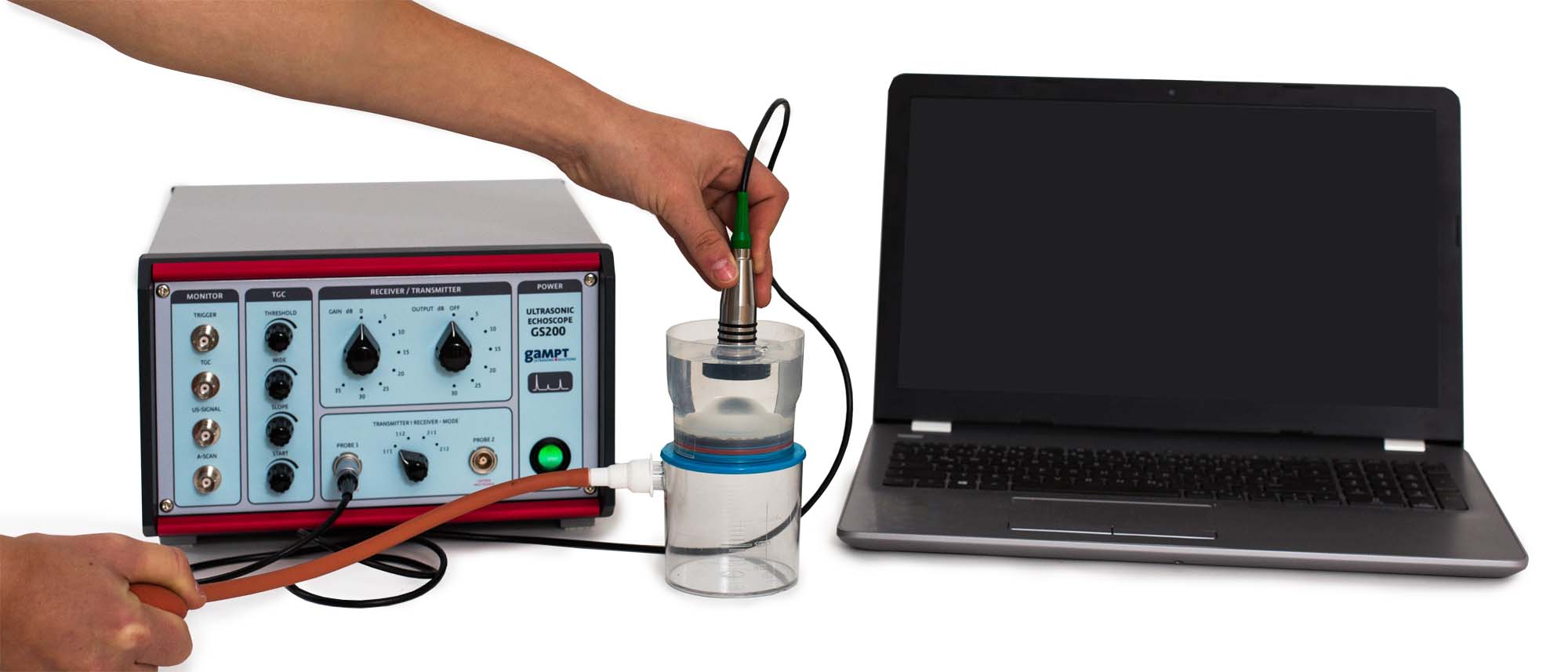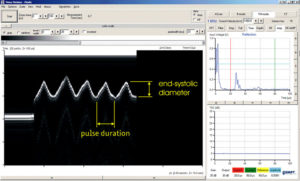Article No. VK-MED01
MED01 Ultrasonic TM-mode (echocardiography)
Simulation of the movement of the cardiac wall with a simple heart model, examination by means of the time-motion method (TM-mode, echocardiography), determination of heart rate and cardiac output
- Subject matter of the experiment
- Theoretical and practical aspects of the experiment
- Results
- Equipment
- Related Experiments
In the experiment, the movement of the cardiac wall is simulated with a simple heart model. This movement is examined by means of the time-motion method (TM-mode). The heart rate and the cardiac output are determined using the TM-mode recording.
Keywords: Ultrasonic echography, reflection, pulse echo method, time-motion mode, presentation of movement sequences, cardiac wall movement, echocardiography
]In echocardiography, the time-motion mode (TM-mode), also known as motion mode (M-mode) for short, is used to investigate movement sequences of the heart and its structures. As with a B-Scan representation, the amplitudes of the ultrasonic signal echo of an A-Scan are imaged on the vertical axis in grey or false colour values. The time-staggered echoes that are produced with a high pulse repetition rate are shown next to each other on a horizontal time axis. In this way a graph is produced that reproduces the movement of the examined structure over time. In the experiment, movement is produced by hand using a membrane. This simulates the periodically repeating movement of a cardiac wall or heart valve. A TM-mode image of the simulated cardiac wall movement is recorded using the measurement software. This can be analysed and evaluated as regards the characteristic quantities for the description of heart activity.
The screen shot of the measurement software in the TM-mode shows, on the left side, the TM-mode recording of a cardiac wall movement simulated with the simple heart model. The pulse duration and the end-systolic ventricular diameter can be determined from this recording. The heart rate and the end-systolic heart volume and the cardiac output can be derived from these two values. In the case of the model, the end-diastolic volume is here assumed to be zero.
| Ord.no. | Description |
|---|---|
| 10400 | Ultrasonic echoscope GS200 |
| 10154 | Ultrasonic probe 4 MHz |
| 10220 | Heart model |
| 10310 | – optional: Tripod set |

